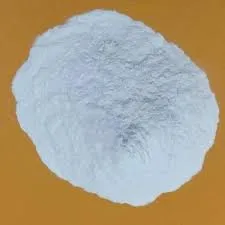
Դկտ . 09, 2024 17:32 Back to list
Applications and Benefits of Hydroxyethyl Cellulose in Various Industries
The Versatile Uses of Hydroxyethyl Cellulose
Hydroxyethyl cellulose (HEC) is a non-ionic, water-soluble polymer derived from cellulose, a natural polymer abundantly found in plant cell walls. It has garnered significant attention in various industries due to its unique properties and versatility. HEC is synthesized through the etherification of cellulose with ethylene oxide, resulting in a compound that exhibits exceptional thickening, binding, and film-forming capabilities. These characteristics make it a valuable ingredient across numerous applications, including pharmaceuticals, cosmetics, food products, and industrial formulations.
One of the primary applications of hydroxyethyl cellulose is in the pharmaceutical industry. HEC serves as a critical excipient in drug formulations, where it enhances the viscosity of solutions, ensuring that active ingredients remain uniformly distributed. This is particularly important in the development of oral, topical, and ophthalmic medications. In the formulation of gels, HEC contributes to the desired consistency and stability, making it easier to apply and improving patient compliance. Furthermore, its ability to retain moisture makes it a valuable component in hydrogels designed for wound care, where it provides a moist environment conducive to healing.
The Versatile Uses of Hydroxyethyl Cellulose
The food industry also benefits from the incorporation of hydroxyethyl cellulose. HEC is utilized as a thickener, emulsifier, and stabilizer in various food products, including sauces, dressings, and dairy products. It aids in maintaining the desired texture and consistency while preventing separation of ingredients. Moreover, HEC can improve the mouthfeel of low-fat products, allowing manufacturers to create healthier options without compromising sensory experience. As a dietary fiber, HEC is also explored for its potential health benefits, such as enhancing gut health and aiding in digestion.
hydroxy ethyl cellulose uses

In industrial applications, HEC is often employed in construction and building materials. Its water-retention properties make it an ideal additive in cement-based products, such as mortars and plasters, where it improves workability and adhesion. By prolonging the curing time, HEC helps prevent cracking and ensures a more durable finished product. Additionally, its use in paints and coatings enhances stability and reduces the risk of settling, leading to better overall performance and a smoother finish.
The efficacy of hydroxyethyl cellulose in diverse applications can be attributed to its adjustable molecular weight and degree of substitution, which allow manufacturers to tailor its properties to meet specific needs. This versatility drives ongoing research and innovation, resulting in new formulations that leverage HEC's unique characteristics. As consumer preferences shift towards eco-friendly and sustainable products, the natural origin of HEC positions it as a favored ingredient in many formulations.
Moreover, the regulatory status of hydroxyethyl cellulose is another advantage that facilitates its adoption across industries. Recognized as a generally safe substance, HEC is approved for use in food, cosmetics, and pharmaceuticals by various regulatory bodies, including the FDA. This widespread acceptance encourages manufacturers to explore its use in new applications while ensuring safety for consumers.
In summary, hydroxyethyl cellulose is a multifaceted polymer with a broad range of applications across numerous industries. Its unique properties make it an indispensable ingredient in pharmaceuticals, cosmetics, food products, and industrial formulations. As technology advances and consumer demands evolve, hydroxyethyl cellulose is poised to continue playing a crucial role in the development of innovative and effective products that meet the needs of both industries and consumers alike.
-
The Widespread Application of Redispersible Powder in Construction and Building Materials
NewsMay.16,2025
-
The Widespread Application of Hpmc in the Detergent Industry
NewsMay.16,2025
-
The Main Applications of Hydroxyethyl Cellulose in Paints and Coatings
NewsMay.16,2025
-
Mortar Bonding Agent: the Key to Enhancing the Adhesion Between New and Old Mortar Layers and Between Mortar and Different Substrates
NewsMay.16,2025
-
HPMC: Application as a thickener and excipient
NewsMay.16,2025
-
Hec Cellulose Cellulose: Multi functional dispersants and high-efficiency thickeners
NewsMay.16,2025







